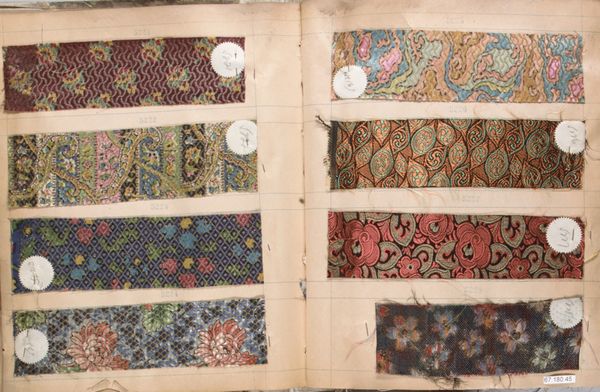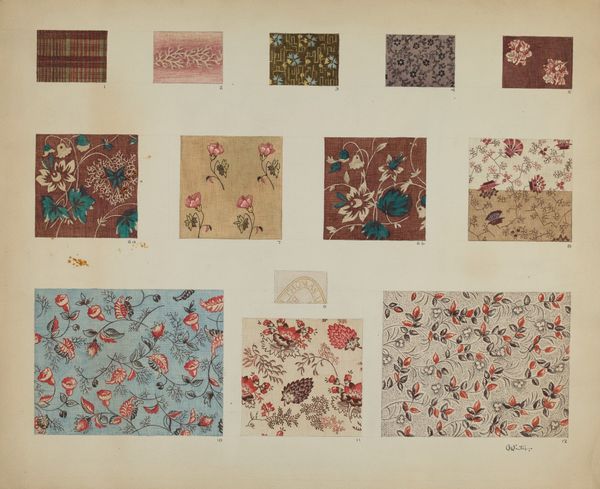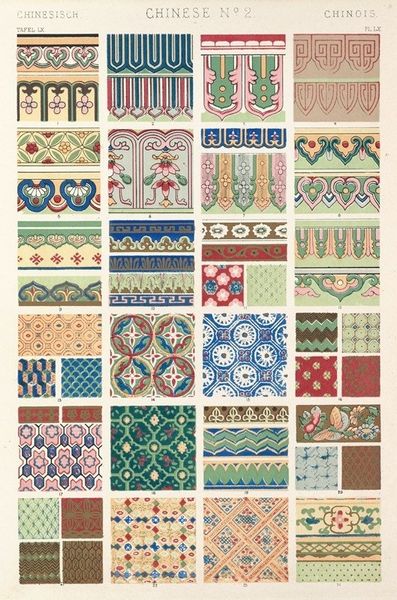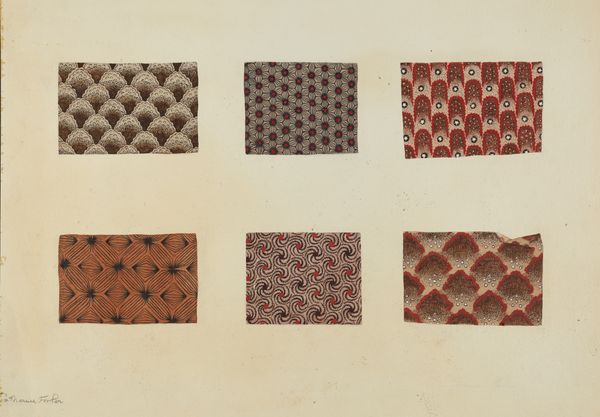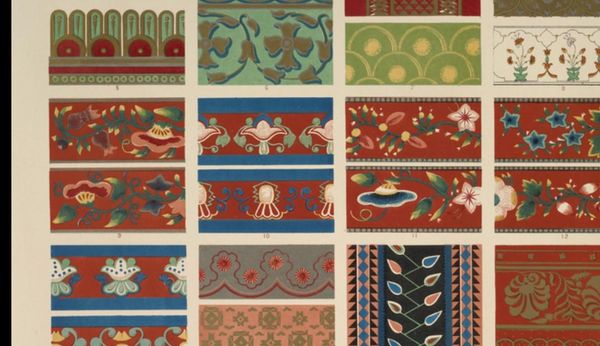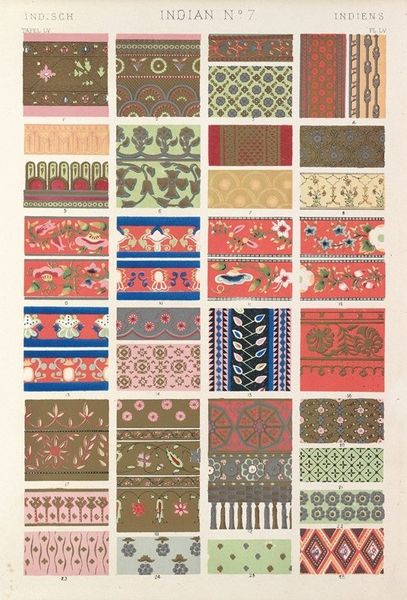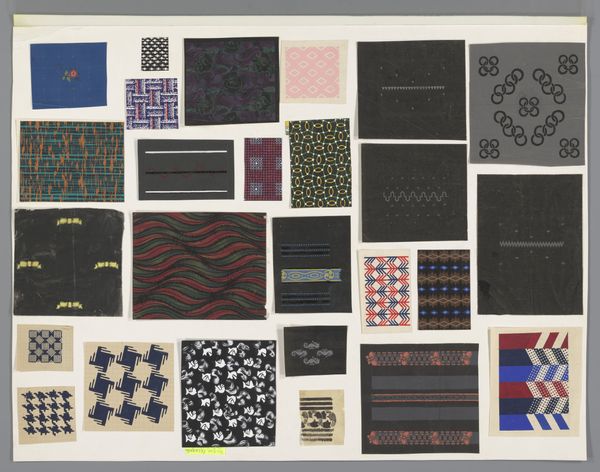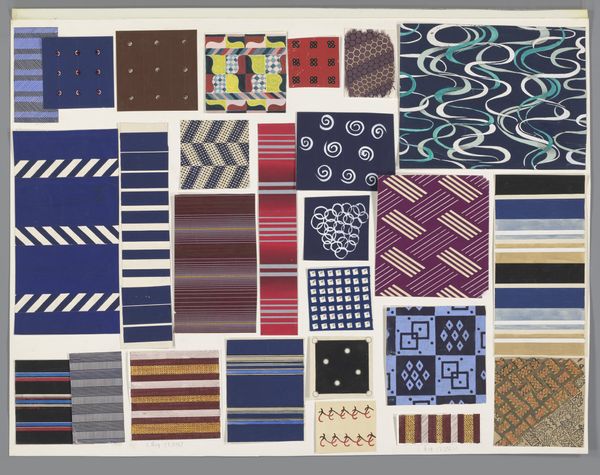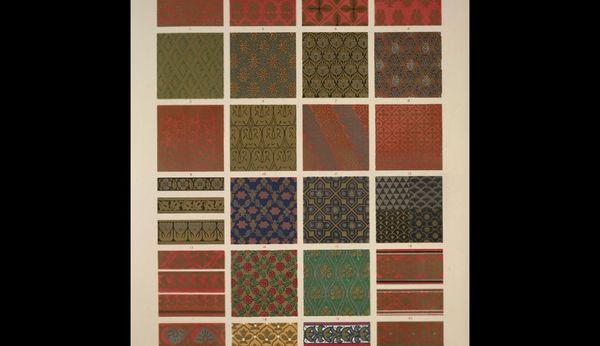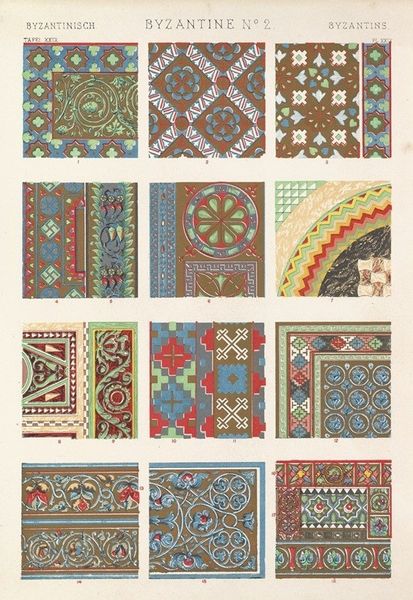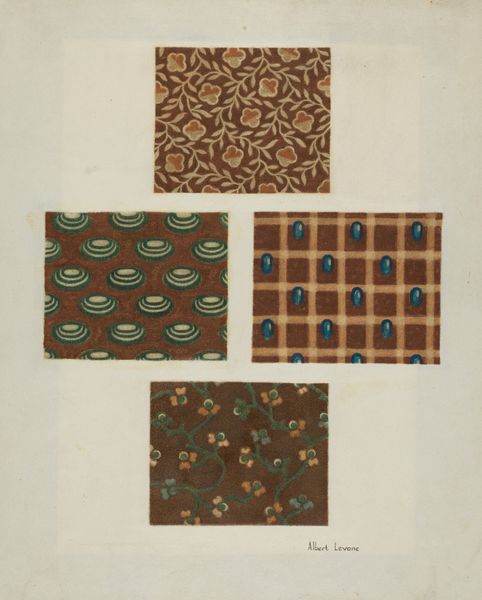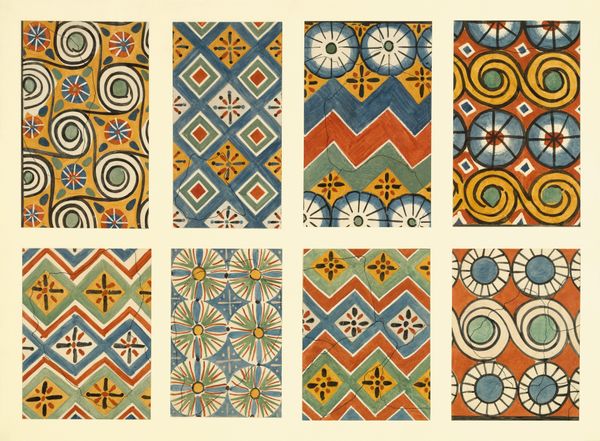
textile
#
fashion design
#
underwear fashion design
#
fashion mockup
#
textile
#
collage layering style
#
fashion and textile design
#
fabric design
#
textile design
#
decorative-art
#
imprinted textile
#
layered pattern
#
clothing design
Dimensions: 5 1/2 x 2 3/4 in. (14 x 7 cm)
Copyright: Public Domain
Curator: Today we're looking at a textile artwork from 1856 entitled "Samples," attributed to Pacific Mills. It's a mixed-media collage featuring various textile samples. What's your immediate take? Editor: My first impression is that this collage, composed of orderly textile rows, emanates a curious sense of both opulence and constraint. The textures promise luxury, yet they are regimented on the canvas, hinting at something else... Curator: That contrast is quite telling. These aren't just pretty patterns; they are a glimpse into the socio-economic realities of textile production and consumption during the Industrial Revolution. Pacific Mills was a significant player, and its designs shaped popular fashion, labor practices, and even global trade. Editor: Precisely! Think about the labor that went into each of these patterns—the designers, the mill workers, the distribution networks. It’s about how material processes impact our lives, demanding consideration of not just visual appeal but also modes of production. We must analyze the production methods behind those patterns and their relationship to capitalist systems. Curator: And it speaks to gendered labor too. The textile industry heavily relied on women's labor, often under exploitative conditions. These samples, while visually pleasing, represent a complex web of power dynamics, exploitation, and creativity, especially during the Victorian era when ideals of domesticity and femininity were rigidly defined. Editor: It certainly pushes the boundary of “art” as separate from "craft". Mass production changed our perception of value: What makes one textile worth buying? Who gets to decide the "good" design, and under what financial or material circumstances was it manufactured? Curator: Absolutely. "Samples" challenges our notions of authorship and originality, prompting us to consider the collaborative nature of design and its entanglement with industry and broader cultural currents. These small pieces say a lot about larger cultural issues. Editor: I see this work as encouraging a more critical view. We cannot view them as only pleasant designs on fabric: we must assess the materials, the social structure involved in their manufacturing, and the impact these textile samples had on the economics of the time. Curator: A powerful statement. "Samples," though seemingly simple, prompts critical thinking about art, industry, and social structures. Editor: Indeed, it compels us to engage in difficult historical examination.
Comments
No comments
Be the first to comment and join the conversation on the ultimate creative platform.
